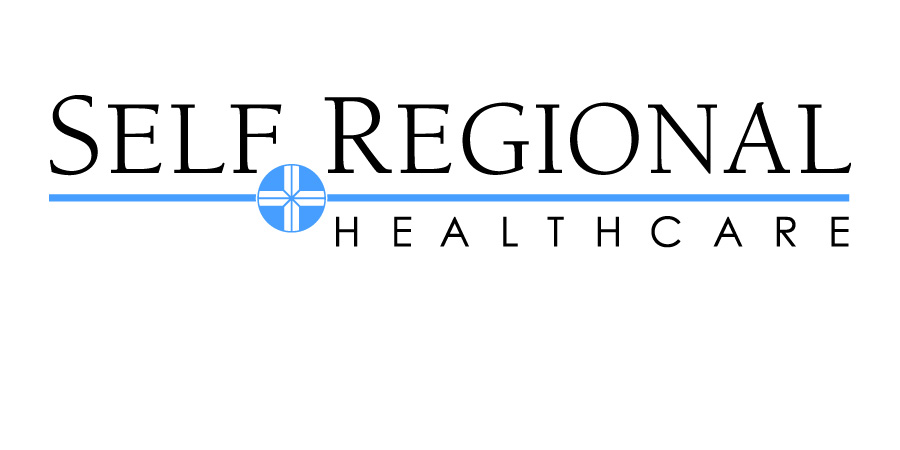Information
-
Document No.
-
Audit Title
-
Client / Site
-
Conducted on
-
Prepared by
-
Location
-
Personnel
REAGENTS
-
Are all reagents within their expiration dates?
-
Do the reagents packs for Triage & I-STAT that have been removed from the refrigerator, have an expiration date on them?
-
Are there open dates on all reagents and disposables that have been opened?
-
Are there adjusted expiration dates on reagents after they are opened?
-
Is there an adequate supply of reagents and disposables on hand?
-
Are the reagent lot numbers and expiration dates updated in LabDAQ?
TESTING
-
Are specimens collected and handled according to lab protocols?
-
Are all specimens labeled correctly?
-
Is the specimen quality/integrity adequate to perform testing?
-
Is staff complying with policies and procedures?
-
Are all waved testing QC done and documented?
-
MARCH, SEPTEMBER - 6 Month Pre-Analytic assessment of specimen, handling, collection & Labeling: Did you do a visual inspection of staff, documentation and policy procedure?
-
Are patients identified by name and second identifier by phlebotomist?
-
Are specimens adequately labeled following established protocol (at patient bed side)?
-
Did the patient identifier remain with the sample throughout the testing process?
-
Are specimens collected, handled and stored according to policy?
-
Do patients receive written information for testing with special requirements?
-
Is there a policy in place for unacceptable specimens and possible recollection?
-
Are referred specimens labeled, stored and shipped according to protocol?
-
Are all laboratory staff following universal precautions at all times?
-
Summary and analysis of findings:
PROFICIENCY TESTING
-
VARIOUS MONTHS - Was there a proficiency test done this month?
-
Have all proficiency testing been performed according to CLIA guidelines?
-
Is all proficiency testing performed in the same manner as patient testing?
-
Are all testing documentation, submission forms, and attestation forms retained?
-
Was there a review of graded results conducted and documented?
-
Are unsuccessful PT events investigated and has corrective action been taken?
-
For testing using two different methods; were split studies documented? (i.e. cardiac enzymes)
-
Summary and analysis of findings:
COMPUTER / IT / LIS
-
Are techs using their own log-in?
-
Are techs logging out when leaving the lab?
-
Do the electronic requisitions (e-req for reference lab tests) contain all necessary information?
-
FEBRUARY, AUGUST - Every 6 months - Did you assess the pre analytic test tracking by reviewing 10 requisitions to verify that all pertinent data is documented? (If Electronic Medical Record, verify the EMR)
-
Was the name & address of the healthcare provider ordering tests and performing lab present?
-
Was the patient name and a second identifier (i.e.MR#, DOB) on the requisition?
-
Was there a date and time of specimen collection, & phlebotomist initials on the requisition?
-
Was there other pertinent information such as sex, date of birth, source of culture and/or diagnosis on the requisition?
-
Review 10 send out records (reference lab tests) for all required information; Is all required information present?
-
Summary and analysis of findings:
-
AUGUST OR AS NEEDED - Is this an annual or physician request of an analytic review of patient population reference ranges?
-
Were 20 normal patient samples tested for all tests performed in the lab?
-
Were these results compared against current normal ranges established in manuals?
-
Were there any normal ranges that needed to be adjusted?
-
What tests ranges were changed?
-
Did the Lab Director sign for her/his approval?
-
Were all physicians notified?
-
Are the updated normal ranges posted within the laboratory and in the LIS?
-
Summary and analysis of findings:
EQUIPMENT:
-
Are maintenance logs, calibration records, and I-STAT analyzer tapes/reports up to date and easily accessible?
-
Has all monthly maintenance been performed and documented?
-
Has supply or vendor problems been documented?
-
Were unscheduled maintenance or service repairs documented?
-
Are monthly calibrations performed as scheduled?
-
APRIL, OCTOBER - 6 month analytic instrumentation review:
-
Has calibration and calibration verification been performed on all necessary equipment?
-
Has calibration and calibration verification been performed on the Piccolos? (Correlation between the two analyzers)
-
Has calibration and calibration verification been performed on the Hematology analyzer?
-
Has calibration and calibration verification been performed on the Biosite Triage?
-
Has calibration and calibration verification been performed on the Qualigen FastPack IP
-
Has calibration and calibration verification been performed on the Clinitek Stratus
-
Has calibration and calibration verification been performed on the i-STAT?
-
Has calibration and calibration verification been performed on the Glucometers? (Correlation between the two analyzers)
-
OTHER:
-
Summary and analysis of findings:
-
Has the daily, weekly and monthly maintenance been performed and documented?
-
Is quality control being performed according to policy and procedure?
-
Has the QC been reviewed at least monthly by the lab director or designee?
-
Has corrective action been documented and patient results reported only with acceptable quality control values?
-
Is corrective action taken and documented when analyzers do not meet performance specifications?
-
Summary and analysis of findings:
CONTROL OF RECORDS
-
Are lab results retained for a minimum of 2 years?
-
Are maintenance & calibration records retained for the life of the analyzer plus 2 years after removed from service?
-
Are the disposition of records documented when they have been disposed of?
ENVIRONMENT
-
JUNE - Is it time for the annual compliance assessment (visual review of laboratory physical environment for safety, patient confidentiality compliance, update of procedure manuals, laboratory licensing and enrollment)?
-
Are fire extinguishers present and service updated, eye wash tested if present and/or within expiration date?
-
Is there personal protective equipment present?
-
Has biohazard waste disposed of properly into conveniently placed containers?
-
Is the biohazard trash picked up regularly and documented with receipts?
-
PATIENT CONFIDENTIALITY: Are computer screens and records protected?
-
Have the OSHA, Safety, and MSDS manuals present and updated?
-
Is the lab procedure manual up to date and signed by the lab director/designee annually?
-
Is the lab CLIA, COLA, & State Licensure current? Is the enrollment in API Proficiency Testing current?
-
Are all instrument and test records retained for established time? (Test electronic records)
-
Summary and analysis of findings:
-
Are laboratory records being stored, protected and easily retrievable?
-
Is TempTrack operating properly and being audited daily by facility staff?
-
Is the temperature appropriate for performing lab tests?
-
Is the lighting adequate to read and perform tests?
-
Is the lab clean and orderly?
-
Are noise levels controlled and within limits?
EDUCATION
-
JANUARY - Is this the annual personnel training evaluation month?
-
Is there documentation of initial, six month or annual evaluation?
-
Has assessment of competency by proficiency testing and other skills checklist ben utilized?
-
Is there documentation of continuing education (at least one per year)?
-
Is there proof of education (H.S., A.A., B.S., Certifications, Diplomas and other as necessary) in their employee folder/
-
Is there annual documentation of Blood Born Pathogen, Safety, and OSHA training?
-
Is there evidence of Hepatitis B Vaccine options or vaccination documentation in the lab employee file?
-
Summary and analysis of findings:
-
Do the techs that are performing tests have documented competency?
-
Is the training documented and readily available?
-
Have staff signed off on this months continuing education?
-
Have staff initialed API result forms?
-
Have staff reviewed this months assigned procedures from MCN?
-
List any additional lab training classes:
QUALITY ASSURANCE
-
The percent of Critical Values <95% (Non-Compliant)
-
MAY, NOVEMBER - 6 month assessment of critical values and turn around times; Did you evaluate 10 patient orders with review of order time to result entry? Did you also evaluate 10 reference lab requisitions with review of time sent to receipt of results?
-
Was the critical value documented and reviewed by supervisor to include patient name, result, date & time of notification and person notified?
-
Are routine results available to physicians within 4 hours of collection?
-
Are STAT results for tests performed in-house available to physicians within 1 hour of collection?
-
Is the turn-around-time for specimens sent to the reference lab within the reference lab stated times?
-
Summary and analysis of findings:
-
The Percent of Quality Controls <98% (Non-Compliantly)
-
Are Quality Control ranges updated in LabDAQ?
-
Monthly analytic QC assessment; Were the QC records and logs reviewed weekly by lab staff or designee and monthly by the lab director or designee? (QC done as required, QC log complete & LJ Charts present)
-
Summary and analysis of findings:
-
The Percent of Amended Reports <90% (NON-COMPLIANT)
-
MAY, NOVEMBER - 6 months post analytic review of result reporting; Did you review 10 lab reports against patient charts, review of rejection logs and corrected reports?
-
Did the reports contain test name, results, units, normal ranges, patient name, lab name and address, testing personnel?
-
Did the lab record and patient chart contain the same results?
-
Were unacceptable specimens documented as rejected?
-
Was the policy for corrections followed; physician notified, original and corrected report retained for two years?
-
Are all lab records maintained for 2 years (pathology records for 10 years)?
-
Summary and analysis of findings:
-
FEBRUARY, MAY, AUGUST, NOVEMBER - Quarterly: Is this a month for our quarterly communication complaint investigation?
-
Was there a quarterly meeting held to evaluate communication and complaints between lab staff, patients, physicians and other facility staff?
-
Was there any communication breakdowns with documented possible solutions?
-
Have complaints been properly recorded and investigated?
-
Has remedial action been documented for all valid complaints?
-
Summary and analysis of findings:
UNEXPECTED EVENTS (includes; incidents, complaints or problems)
-
Was there any unexpected event this month?
-
Document: Problem or Event Description, Cause of Event, Problem Resolution & Implementation Date.
MEDIA / PICTURES
-
Add media
COMPLETED BY
-
Add signature
-
Select date













